The word “rangoli,” which means “color,” is derived from the words “Aavalli,” which means “colored creepers” or “row of colors,” and is one of the most exquisite and beautiful art forms in India. The Radiant Star Rangoli is essentially the practice of utilizing finely powdered white powder and other colors to create designs or patterns on the walls or floors of a home. In the Indian subcontinent, many families decorate their courtyards with Rangoli patterns. Unlock the secrets of simple yet stunning rangoli designs! Follow our tutorials and bring vibrant art to your doorstep.
The Rangoli’s Origin
The origins of Rangoli art in India are the subject of several tales. The first Indian painting book, Chitralakshana, contains the oldest reference to this art genre. It is reported that in one country there was great dejection following the death of the son of a high priest. The inhabitants of that kingdom appealed to Lord Brahma, pleading with Him to revive the boy. Lord Brahma was moved by the boy’s prayers and requested that the monarch paint the boy’s likeness on the ground. The youngster then came back to life as He breathed life back into the portrait. This is thought to have been the process used to create the original Rangoli painting.
Alternative mythology states that during one of God’s creative episodes, He would occasionally remove mango tree juice for use as paint. After that, he drew a lovely woman’s figure using paint. The woman was painted in such a spectacular way that it is claimed to have embarrassed the celestial maidens. After that, women started painting self-portraits using rangoli as a common medium. Rangoli’s extensive use as floor paintings has been documented, even by Chola emperors. Furthermore, it is stated that sand or powder is utilized to create Rangoli designs because the delicate design and color scheme represents the transience of life and Maya.
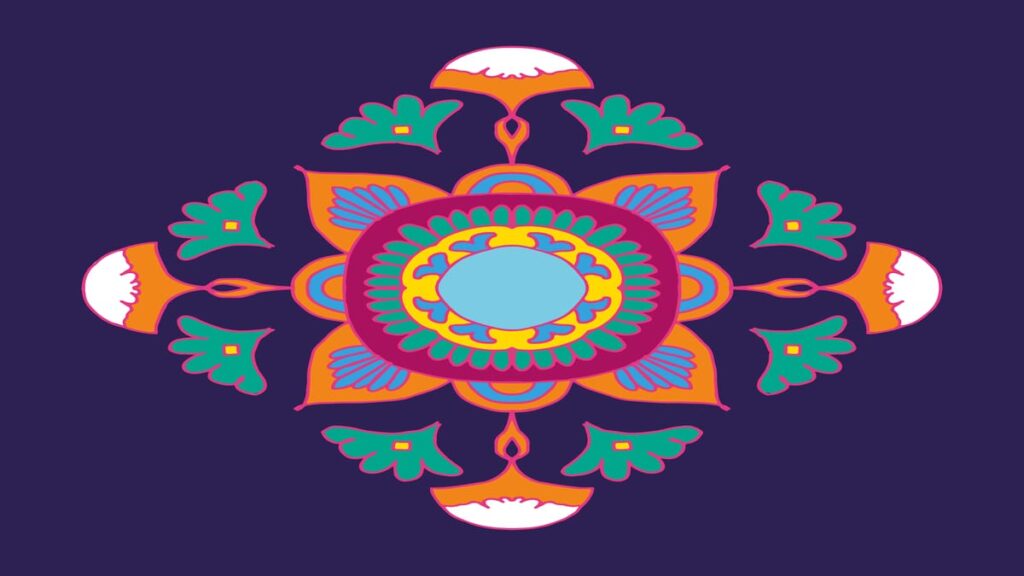
Rangoli Patterns and Designs
The old form of Rangoli used natural themes and designs, such as mangos, flowers, peacocks, swans, and creepers. Traditional painting used natural dyes such as tree bark, leaves, and indigo to extract colors for the artwork. It isn’t used as often these days, though. The natural dyes used in the past have largely been supplanted by synthetic dyes nowadays. Contemporary Rangoli patterns are made using materials that create either a three-dimensional look or a very flat appearance. Nowadays, geometric patterns, the swastika, lotus, trident, fish, conch shell, creepers, leaves, trees, flowers, animals, etc. are among the prevalent rangoli designs.
How the Radiant Star Rangoli is Made?
To make Rangoli, people often use colors made up of a base of coarsely ground powder blended with other colors. But people can also use colorful powder for visually striking decorations. Sand, marble grit, sawdust, or other coarse bases work best for making Rangoli because they offer a good grip and allow for more control over the color sprinkles. Generally speaking, the colors utilized are very fine pigment powders like Gulal or Aabir.
You can try spices like rawa, turmeric, rice flour, wheat flour, and others, as well as colored powders like indigo, for home use. Make sure the design you choose to draw is continuous and has no spaces between lines. Breaking a line is believed to allow bad spirits to enter the house.
Steps to Draw Radiant Star Rangoli
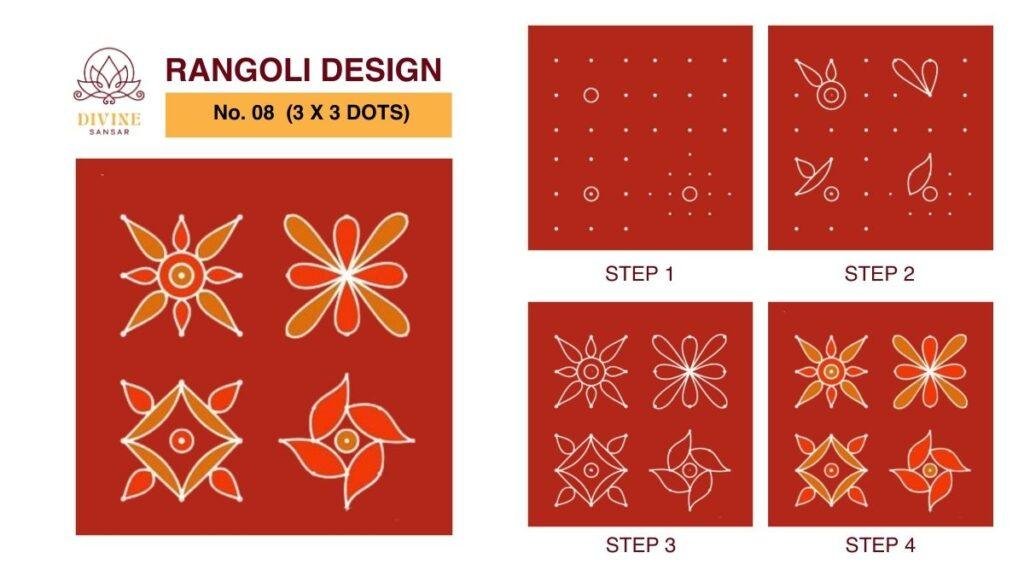
1. Select Your Location
Though any flat surface may do, the front entrance is the typical location for a Rangoli.
2. Make the Surface Ready
Your design will lay nicely in a dust-free, spotless environment.
3. Summarize Your Creation
To assist you in coloring, use a pencil or chalk drawing of the design you have selected.
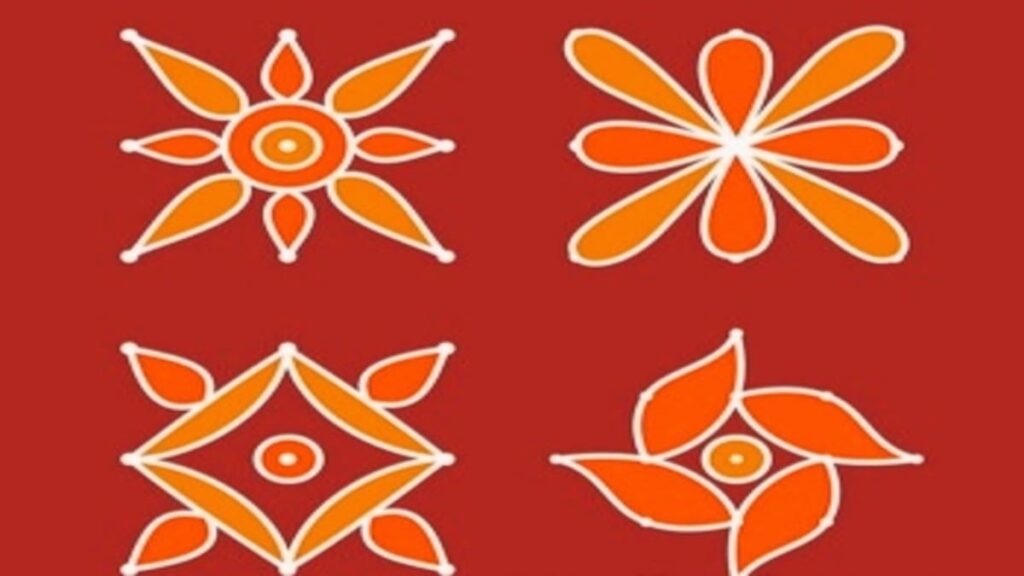

4. Select and Add Hues
Use a spoon or your fingers to carefully apply the colors as you begin to fill in the outlines with the materials of your choice.

5. Incorporate Patterns and Specifics
Handle your Rangoli steadily and add fine details. Diya lights, floral designs, and peacocks are common motifs.

6. Include the last details
To maintain the design’s crisp appearance, remove any loose powder and think about using a fixative spray.
Rangoli in Various States
In various regions of the nation, people refer to rangoli art by various names, including:
- Chowkpurana (Uttar Pradesh)
- Madana (Rajasthan)
- Muggu (Andhra Pradesh)
- Rangoli (Gujarat, Karnataka and Maharashtra)
In the northern regions of India, people use traditional wet colors to create Rangoli designs. However, Rangoli designs made with powdered colors are more prevalent in the southern regions of the nation.
Alpana (Bengal)
The type of Rangoli called Alpana, which is popular in Bengal, is a perfect illustration of the people’s aesthetic sense. Practiced mostly by women in the state, the art form is a synthesis of modern designs and historical experience. Researchers are conducting large-scale experiments with novel shapes and hues, while the fundamental designs remain mostly unchanged.
Aripana (Bihar)
An art form unique to Bihar is the Aripana, which is a Rangoli variation. This type typically consists of line drawings depicted on the house’s floor. Each and every auspicious ritual in Bihar, whether it be a samskara (Mundan, Vivah, Yajnopavita, etc.), a puja, or a vrata (fast), includes aripana patterns. They prepare Aripana designs the night before a ceremony in the courtyard, the door front, and several other locations.
Kolam (Kerala and Tamil Nadu)
In the southern regions of the nation, particularly in the states of Kerala and Tamil Nadu, people call the art form Rangoli Kolam. The Hindu community living in this area widely utilizes this art style. With the aid of rice powder, the female members of the household typically sketch Kolam patterns in front of their houses.
Aipan
The state of Uttarakhand, now part of Uttaranchal, still uses one of the ancient Rangoli designs known as Aipan. There is a lot of social, cultural, and religious value attached to the art. In Uttarakhand, the front courtyard of a house, its main entry door, and places of worship are the prominent locations for Aipan decorations.
In conclusion
Rangoli is a celebration of life and a sign of good fortune that has spread from the hallowed floors of temples to the cosy foyers of contemporary houses. Its expression has changed but its core has never changed. As a canvas that combines the sacred and the secular, the old and the new, the local and the global, it stands as a vivid tribute to India’s cultural legacy. Following Rangoli’s vibrant journey reveals a reflection of India, which is a diverse, dynamic country with a rich cultural heritage.



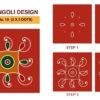

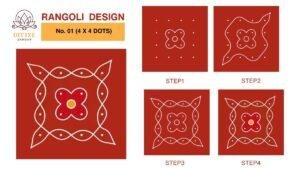
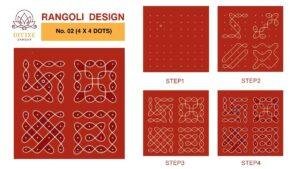
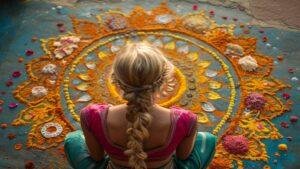





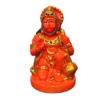
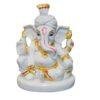

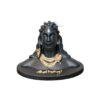

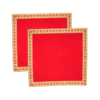
Add comment